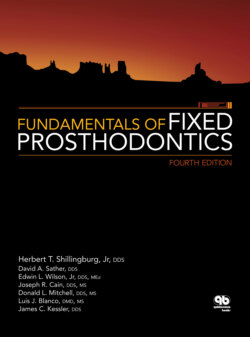Читать книгу Fundamentals of Fixed Prosthodontics - James C. Kessler - Страница 18
На сайте Литреса книга снята с продажи.
Diabetes
ОглавлениеMore than 18 million Americans have diabetes, and another 41 million are “prediabetic.”25 Diabetic patients are predisposed to periodontal breakdown or abscess formation.26,27 Well-controlled diabetic patients should be able to report their self-monitoring blood glucose (SMBG) from that morning. This value, which they obtain by placing a drop of their blood in a glucometer, is a measure of their capillary plasma glucose. Their preprandial (fasting) reading should be in the 90 to 130 mg/dL range. Their peak postprandial (after meals) reading should be 180 mg/dL.28 A long-term measure of diabetic patients’ glycemic control is their glycosylated hemoglobin (HbA1c), a lab test that measures how much glucose is tied to red blood cells (Table 1-1). Its correlation with daily blood glucose numbers is 0.84.29 It can be considered the average blood glucose level over the previous few months.30
Table 1-1 Correlation between HbA1c and mean plasma glucose29
Those whose diabetes is poorly controlled will have elevated blood sugar, or hyperglycemia, and could be adversely affected by the stress of a dental appointment. Hypoglycemia (low blood sugar) can also cause problems. A controlled diabetic (on medication) who has missed a meal or has not eaten for several hours may become sweaty, lightheaded, and disoriented. These patients usually carry some quick source of glucose, such as candy, which should be administered. Four ounces of a regular soft drink or fruit juice or several pieces of hard candy should help them recover quickly. Treatment should be halted for that appointment, and the patient should be monitored at the office until complete recovery can be confirmed. It would be wise to have a family member drive the patient home. Dental treatment for the diabetic patient should interfere as little as possible with the patient’s dietary routine, and the patient’s stress level should be reduced. Any questions about the patient’s ability to cope with dental treatment and whether he or she is properly controlled should be referred to the patient’s physician before proceeding.
